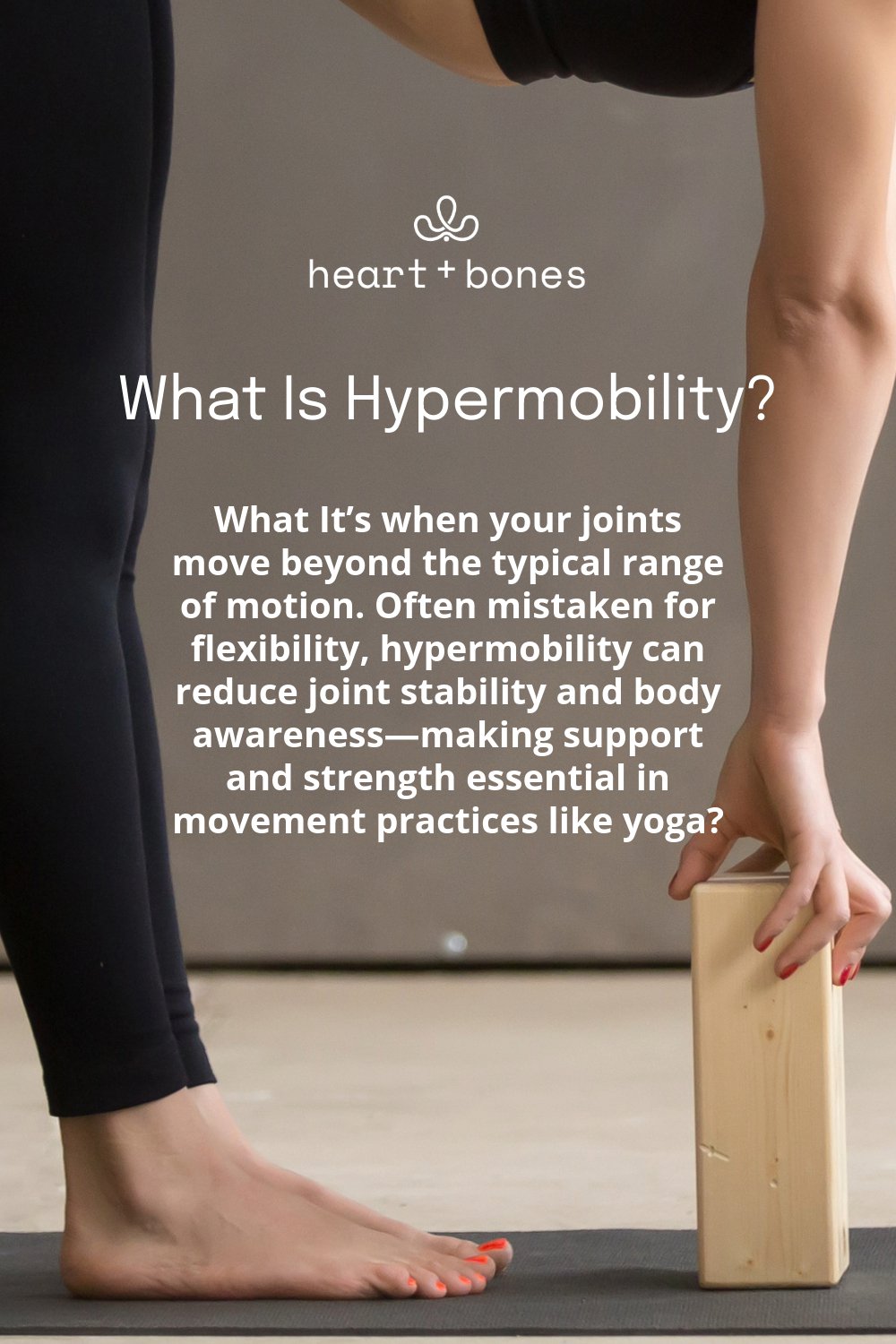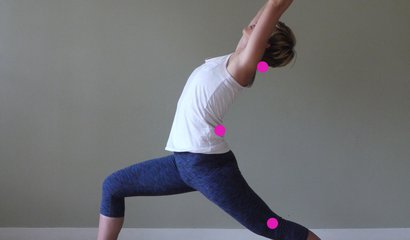July 16, 2025
What Is Hypermobility in Yoga? Why Stability Matters for Every Body
Feeling bendy isn’t always a bonus. In many yoga spaces, hypermobility—when joints move beyond the typical range—has been quietly celebrated. You’re deep in a pose? Great. You can touch your toes with ease? Even better. But what if that flexibility is masking a lack of stability? What if the thing that’s praised is also the thing causing discomfort, injury, or burnout?
This blog is a great companion to our podcast with Brea Johnson, founder of Heart + Bones Yoga. In the episode, Brea and Ula explore what hypermobility really is, how to support it (without glorifying it), and why building stability, boundaries, and proprioception is a powerful path forward—for everyone, not just the hypermobile.
You can find the conversation on Apple, Spotify, and Podbean, and of course we have included a couple options below for immediate access.

What Is Hypermobility?
Hypermobility means your joints move beyond the typical range of motion. It exists on a spectrum—from naturally flexible joints to connective tissue conditions like EDS. In yoga, it can be mistaken for “being good at poses,” but hypermobility often comes with reduced joint stability and less proprioception (body awareness). That’s why strength and support—not just stretch—are key to a sustainable practice.
In yoga, hypermobility can be easy to miss—or mistakenly rewarded. A student folds forward easily or drops into a deep backbend, and we assume it’s a sign of skill. But as Brea points out, “hypermobile bodies often lack proprioception—awareness of where the joint is in space—and that means they’re missing a key boundary signal.”
Which leads to the next big insight:
Stability is not optional.
It’s the support structure that keeps hypermobile—and non-hypermobile—bodies resilient and aware.
From Stretchy Sensation to Supportive Action
For years, many yoga students have been trained to seek out a “stretchy feeling.” But for the hypermobile body, that feeling might only arrive after pushing deep into end range—long after a safe boundary has been crossed.
Instead, Brea encourages teachers and students alike to shift their focus to *mobility—*a balance of strength and flexibility—and to use action cues that encourage activation and awareness.
One example from the episode:
Rather than saying “engage your quads,” try “press the floor away with your foot.”
This subtle shift often results in glutes, hamstrings, and quads turning on—without the student needing to analyze or micromanage muscle groups.
It’s more effective. More inclusive. And it supports both hypermobile and less-mobile bodies equally.
Why This Matters in an Online Yoga Studio
Inside our online yoga studio, we teach using a method we call anatomy-informed yoga. Whether you’re new to movement or a longtime teacher, this approach:
Supports joint health and nervous system regulation
Encourages strength and stability over aesthetic flexibility
Provides sustainable, accessible tools to feel better in your body
- And when it comes to hypermobility, the benefits are even more pronounced. As Brea shares in the podcast, the right cues and props (hello, blocks!) help bring awareness to joints that might otherwise “float” without feedback or support.
For many of us, that support is the missing piece. It's what helps turn yoga from something that looks good into something that actually feels good.
Practical Tips for Teachers and Students
For teachers:
- Don’t cue for depth—cue for engagement.
- Use action-based language (push, press, reach) to encourage nervous system involvement.
- Offer props like blocks to everyone, not just those who “need” them.
For students:
- If you’re hypermobile, focus on stability-building practices.
- Give your body feedback through props, bolsters, and strategic alignment.
- Shift your goals from “going deeper” to “feeling supported.”
Ready to Feel the Difference?
If you’re curious about what this feels like in your body, join us in the Heart + Bones online yoga studio and start your free trial today. You’ll get access to: - A full hypermobility playlist - Classes that balance strength and ease - A supportive, inclusive approach that meets you exactly where you are We’re not here to push you further—we’re here to help you move smarter, feel better, and build sustainable movement habits for life.


